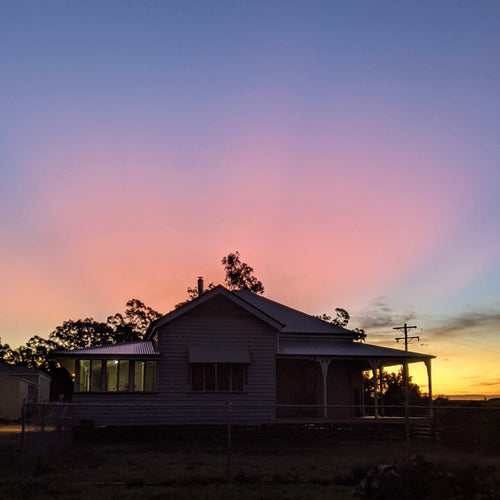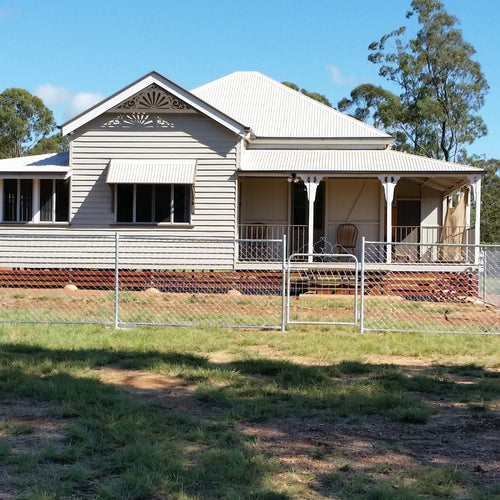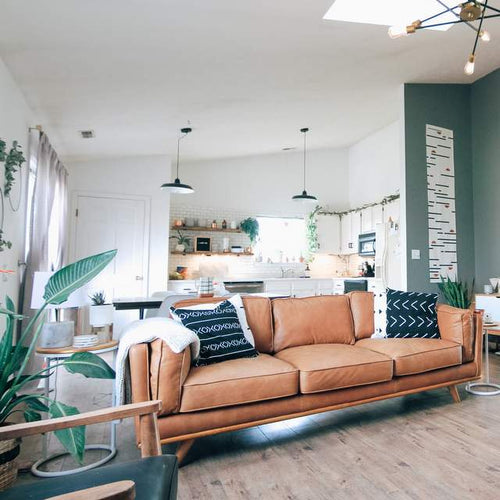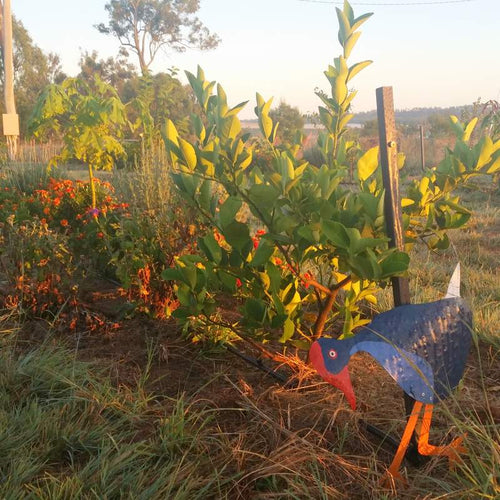Designing a homesteader's house
A friend of mine is considering moving to a new block of land and building a house. She has similar goals and lifestyle to me, so she asked what we considered when designing our house. I guess she assumed that we had it all figured out. The funny part is, the main reason that it took us over a year to get a house organised, and in the end we just bought a secondhand house and moved it, BECAUSE we couldn't decide what we wanted in a house.
Should you build what you want or for resale value?
We couldn't decide if we should build what we wanted or build it to suit mainstream tastes, for resale value. The main sticking point was the ensuite. We have always lived in a house with one bathroom. We are happy with that and would build a house with one bathroom, but new houses typically come with an ensuite and a walk in wardrobe. Both things that we don't particularly need. Finding the secondhand house, we overcome that problem as it only has one bathroom and no space for an ensuite.
Advice for the eco-conscious designer
I think we would have got around to building something eventually, after we got through all those design questions! I thought I would note down at least a little advice for my friend, who is currently baffled by standard house designs and not sure where to start.
- Work out what you actually need in a house based on how you live (or if you are building a standard house for resale and just going to tweak it to work for you). Number of bedrooms and bathrooms is a good start. If you're a keen cook, make sure the kitchen is big enough and if you're into food preservation, go for a large pantry. If you do stuff outside and need a room to take off all your dirty clothes, maybe a laundry, mudroom or utility room is required. We have three bedrooms and a big "sunroom" enclosed veranda, so plenty of room for guests, storage, and study/craft areas. One bathroom and a giant kitchen. A laundry with external access and a second toilet.
- Consider your climate and design for comfort. Look at temperature extremes, are you going to be bothered by hot temperatures or cold temperatures? We are mostly trying to avoid hot temperatures, so we made sure that we had verandas on the North and East of the house (Southern hemisphere), which keeps sun out of the house in the hottest months. We made sure we had plenty of insulation in the roof, ceiling fans and windows positioned for good ventilation. Even though it was a house that we moved, we still got to choose the orientation that worked best for the house on our site. In colder climates, you might actually try to use solar gain to keep your house warm in winter. A great book for the Australian climate is Warm House Cool House: Inspirational Designs for Low-Energy Housing
(affiliate link) - it gave a great explanation of what you can do when designing a new house or retrofitting an existing house.
- Still on climate, how much will you use outdoor areas and should you incorporate these into your plan? We spend a lot of time on our verandas and they are like an extra room (undercover and with plastic blinds to keep rain out) making our little house feel way bigger. If your climate will allow you to spend more than 6 months using an outdoor space, its definitely worth considering how you can use outdoor spaces.
- Try to choose decor that is going to match you lifestyle and level of cleaning care-factor. I love the way the house looked in crisp white primer, but knowing that we are surrounded by red clay soils, I did not want to be keeping that clean. We went for beige walls, with brown trim. I will brighten it up with some colourful furniture. I HATE carpet because I HATE vacuuming, we went for tiles in the bathroom and laundry and wood floors in the rest of the house (as they will move with the house), these should be easy to keep clean.
- Think about what works in your current house, features that you like in houses that you've been into, look through magazines, try to picture how you will use the space and where you would put your essential furniture. Reducing the overall floor area can be a massive cost saving, so don't build it bigger than you need to. Those savings could go into building a decent shed or barn for additional storage and workshop areas away from the house.
- Speaking of storage, we have put in lots and lots of cupboards because I want to be able to store everything away and not have clutter out on any surfaces. We've also decluttered a lot of stuff before moving.
Using Permaculture to design a house
Overall, we used a permaculture approach to our house. Making sure to observe our location first, to set up the house to use wind and solar energy to our advantage. We also get rainwater from the roof (obtain a yield). We will be heating the house with wood from our property (use renewable resources). We have tried as much as possible to reuse materials (produce no waste) and let the spaces be flexible so they way we use the house can evolve as we grow into it (design from patterns to details).
A secondhand house for Cheslen Rise
A tour of our secondhand house (BEFORE)
The story of our secondhand house - Part 1
Choosing insulation for our house
Renovating a Queenslander house
Building the Queenslander house - book review
Stairs for our secondhand house
Removing asbestos from our secondhand house
Another update on our house progress
How to choose exterior paint colours
And one more update on our house progress
Keeping our house warm in winter
























Leave a comment